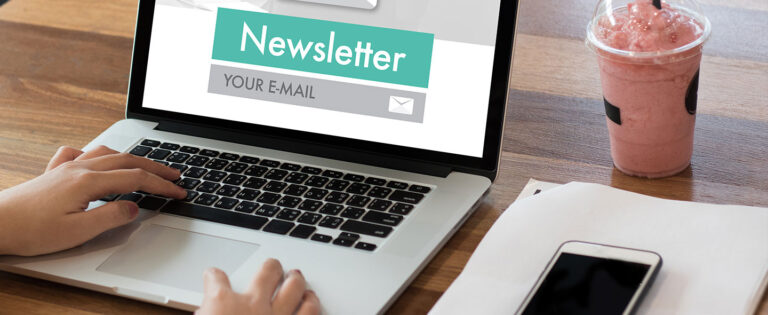
It’s common knowledge: Most email marketers use hundreds, if not thousands, of data points to target you for a sale. Your online activities are like digital puzzle pieces that create a remarkably accurate picture of your tastes and preferences, and what you’re most likely to buy.
If you’re a civil servant, you also know that government emails are held to a higher standard. Personal information must be handled carefully to maintain the community’s trust. How can communications officers and PIOs strike a balance between obligation and innovation?
Good news is that govDelivery allows government agencies to use the same principles as the private sector to increase email engagement through segmentation — without relying on a massive amount of citizen data.
In this article, we’ll cover eleven simple, proven methods for increasing subscriber engagement through email segmentation. First, what is it?
Email segmentation is the process of sorting subscribers based on criteria, with the goal of sending the right message to the right people at the right time.
There are many creative and effective ways you can segment your lists with just a few key variables. I’ll cover a few of the most common ones below.

In govDelivery, you can split your subscriber lists with up to five conditions at a time using custom components, or based on subscribers’ interactions with your account.
[Related: See the latest email benchmarks and more in the 2019 Civic Engagement Report.]
We’ll start with three simple segmentation options. These are available by default for govDelivery users. (Side note: throughout this blog, I’ll often use the term “bulletin,” which is synonymous with “email” in govDelivery).
When you send specific emails to people based on whether they’ve opened or clicked on previous sends, that’s segmenting by email engagement. “Opened” allows you to reach out directly to people who DID or DID NOT open a previous bulletin you sent. Likewise, “Clicked” pulls recipients based on if they clicked a link in a previous bulletin you sent.
Email engagement is an essential way to segment your lists. It can have a huge impact on your overall results. Knowing how someone previously interacted with your content will enable you to send more targeted follow-ups.
For example, you can set up criteria to send to people who opened AND clicked a link in a previous bulletin you sent. These people are engaged and interested with the subject matter and will often be more open to receiving more messages later.
Once you focus on subscribers who engage with your content and communicate with them more intentionally, you will start to see increased engagement metrics on your bulletin detail reports.
Another option is to segment by the domain of a subscriber’s email address. For instance, if you want to communicate directly with your colleagues and peers in government, use “Email address” to send to all topic subscribers whose email address ends with .gov.
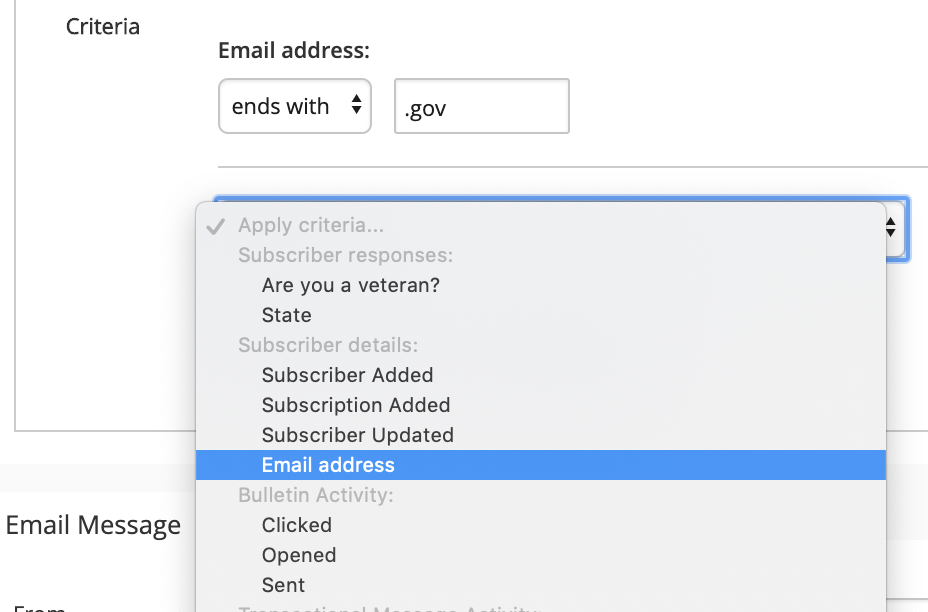
Want to send to your peers? Limit your send to email addresses ending in .gov
You can also sort your email send by when subscribers join a particular email list. Why do this? You may, for example, want to send a special welcome to all new subscribers of a topic. By using “Subscription Added” in govDelivery, you can send a message to all subscribers who signed up for the selected topic in the last X days.
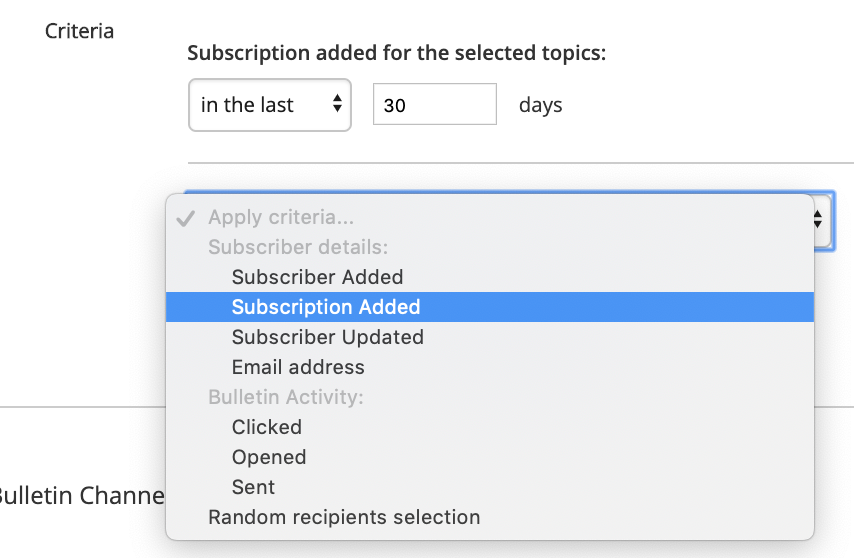
Segment new subscribers with a welcome email.
Another way to use the “Subscription Added” segmentation criteria is to extend the life of your content by re-sending an old bulletin only to people who signed up AFTER the date it was last sent. Those who were subscribed the last time you sent the bulletin won’t receive it again, thus eliminating the risk of repeating content.
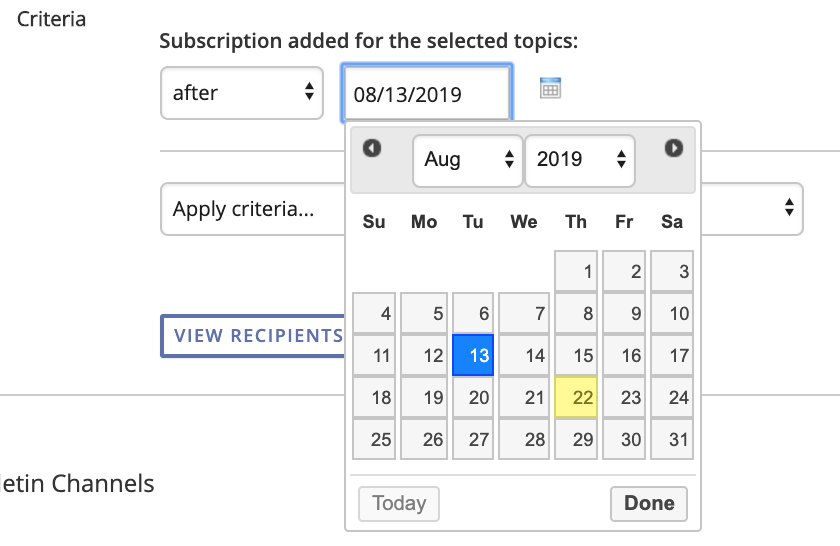
Extend the life of your content by sending an old bulletin to new subscribers.
In truth, you can segment email based on any information you have in your records, with the purpose of curating your messages to suit. The best way to get more tailored information? Ask for it!
If you’re a govDelivery account administrator, you can set up custom criteria by asking questions during the subscription process. Any multiple-choice style question, such as zip code, neighborhood, language, industry, expertise, and interest, can be used as criteria for a send. Subscribers self-select into criteria by answering questions, and keep data updated by changing their answers as needed in their subscriber profile.
The questions you ask during the subscription process will depend on the kind of work your agency does and your audience. Asking pertinent questions creates the most useful criteria, and will result in people wanting to provide this information because it elevates their experience as a subscriber.
govDelivery administrators can also bulk upload subscribers along with question answers, creating dynamically sortable lists from information you already have.
Depending on your goal or agency, you may want to limit or organize your email send by the location of the subscriber. State, county, city, zip code — these can be effective ways to segment. Use geographic location to send updates about road closures, utility work, or weather alerts.
If you have specialized or supplemental content, that can be another valuable way to make sure your subscribers get the information that matters to them. Create a media topic, and then ask what kinds of press releases your subscribers want to receive.
You may also have people who can be categorized based on their job or role in the community. For example, you may wish to send a thank you note to veterans on national holidays.
Keep in mind that while some may find value in answering questions about age range or military status (if they’re signing up for a health-related or veteran’s initiatives topic), that information may be deemed too personal in other contexts.
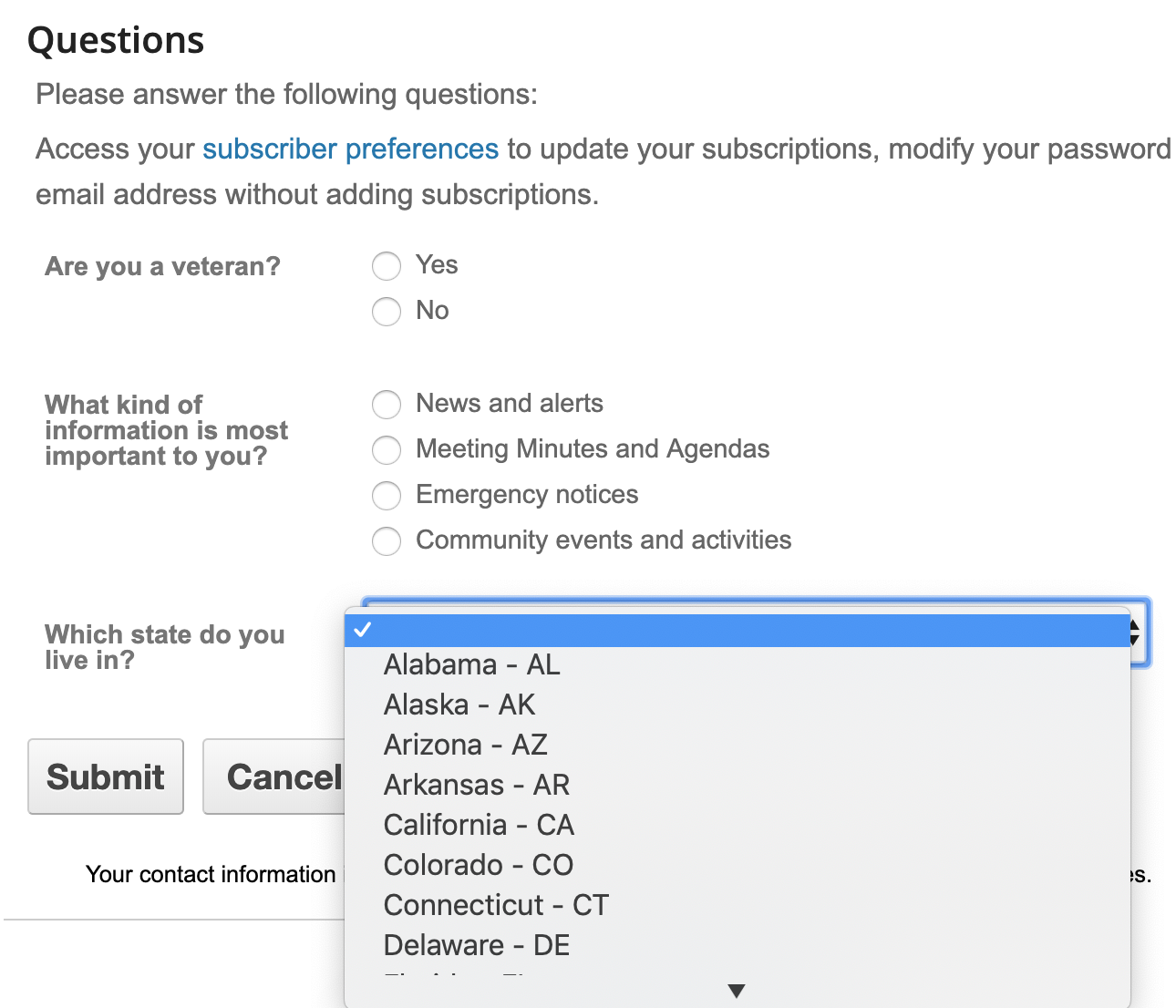
Improve your email segmentation by asking subscribers to share relevant information or interests during the subscription process.
With the right software, you can boost engagement even further through sophisticated segmentation. The govDelivery Advanced Package comes equipped with even more segmentation functionality. It also automates this process by letting you save segments for re-use. When you select your audience for a bulletin, you can choose a pre-created segment instead of setting the criteria up manually each and every time. They can also be used for reporting purposes, as they update automatically as people qualify and disqualify for the parameters.
Here are a couple more examples that combine some of the methods described above. In most cases, they refer to segmentation based on subscriber activity within a date range — whether or not a subscriber was sent any bulletins, opened any bulletins, or clicked any links in any bulletins during a period of time.
Filter for subscribers based on whether or not they were sent, have opened or clicked any links in the account’s transactional messages (typically automated emails sent based on a subscriber behavior), such as an automated message to welcome new subscribers.
An example: You may want to segment by New Subscriber Engagement. In which Subscribers who: “were sent Welcome New Subscriber in the last 30 days” AND Subscribers who: “opened Welcome New Subscriber in the last 30 days.”
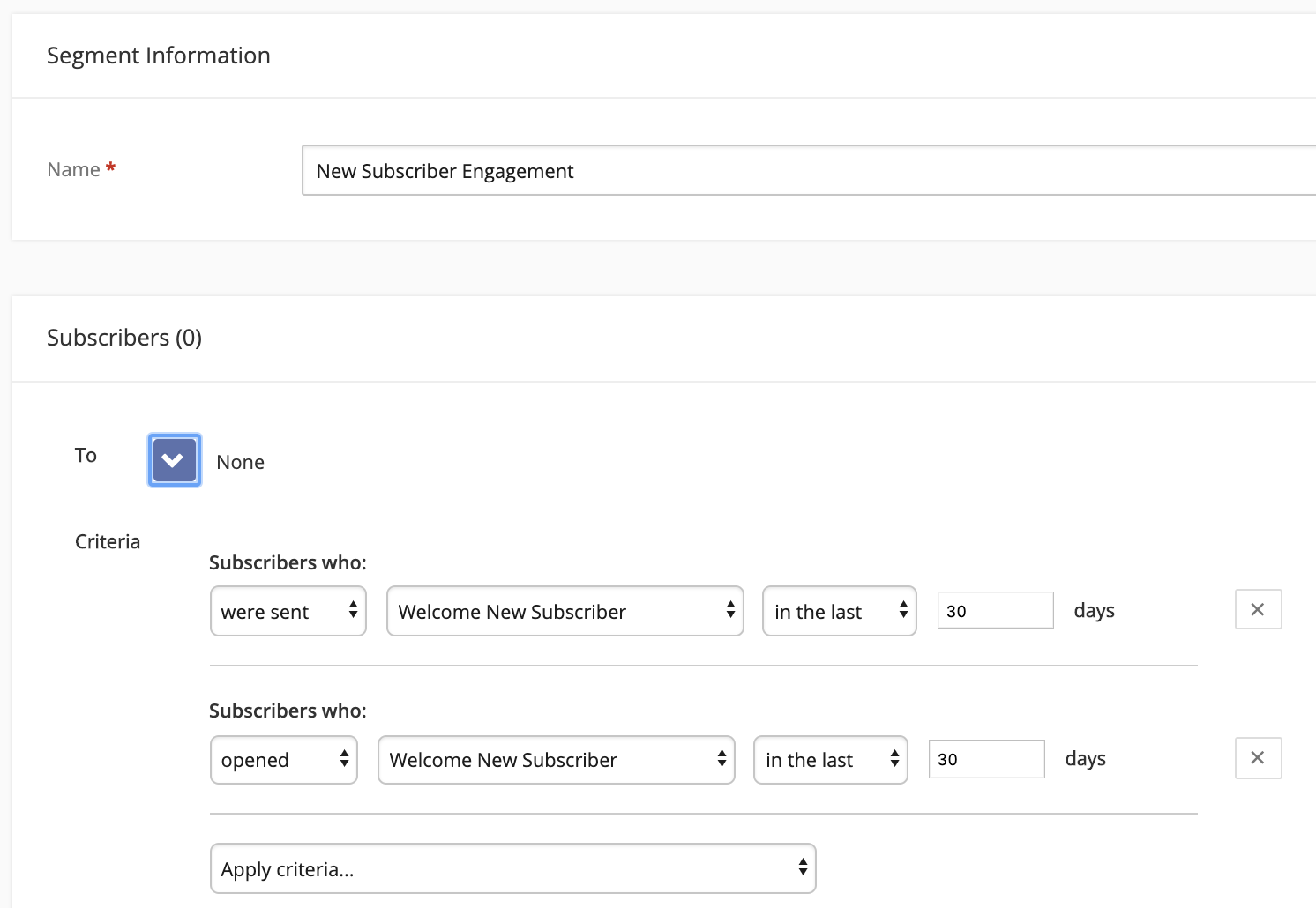
Target deeper by combining segmentation criteria such as engagement within a specific range of time.
You may have previously sent a link using UTM parameters, and now wish to send a message based on whether they’ve clicked that specific link.
Do you have a lot of subscribers who still have an account, but have unsubscribed from all topics (thus creating a subscriber with zero topic subscriptions)? Segment them out and try re-engaging.
Do you have new subscribers who have yet to receive an email from you? Time to engage them right away! At Granicus, we call these no contact subscribers. You can discover them by segmenting subscribers who were sent the welcome subscriber transactional message 30 days ago AND were NOT sent any bulletin in last 30 days.
Do you have what we call sleepy subscribers? At Granicus, we define a sleepy subscriber as someone who hasn’t engaged in the last 90 days. To segment, you’d filter by subscriber who were sent ANY bulletin in last 90 days AND did NOT open ANY bulletin in last 90 days” AND did “NOT click ANY bulletin in last 90 days.” Some of our customers offer sleepy subscribers an option to sign up for other topics which may interest them more.
There are many ways to segment your email. If you’re just getting started, keep it simple and learn as you go. Think about what you expect from retailers in terms of online communications and borrow the tactics that work. Then use real engagement and user attributes to home in on recipients who will be most receptive to your message.
Optimize your govDelivery criteria to start seeing results today. You don’t have to do it alone. Contact Support@Granicus.com for more information on using and creating custom criteria, and other automated features contained in the Advanced Package.
Find out how govDelivery can help you reach and engage citizens with the right message at the right time. Attend a live demonstration of govDelivery.